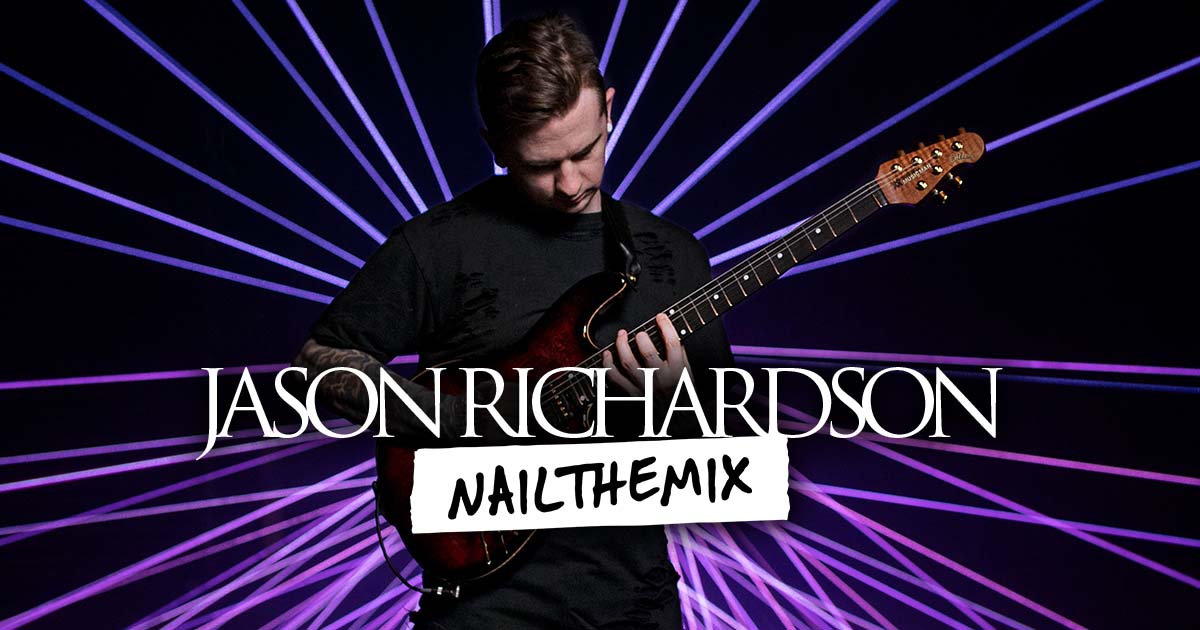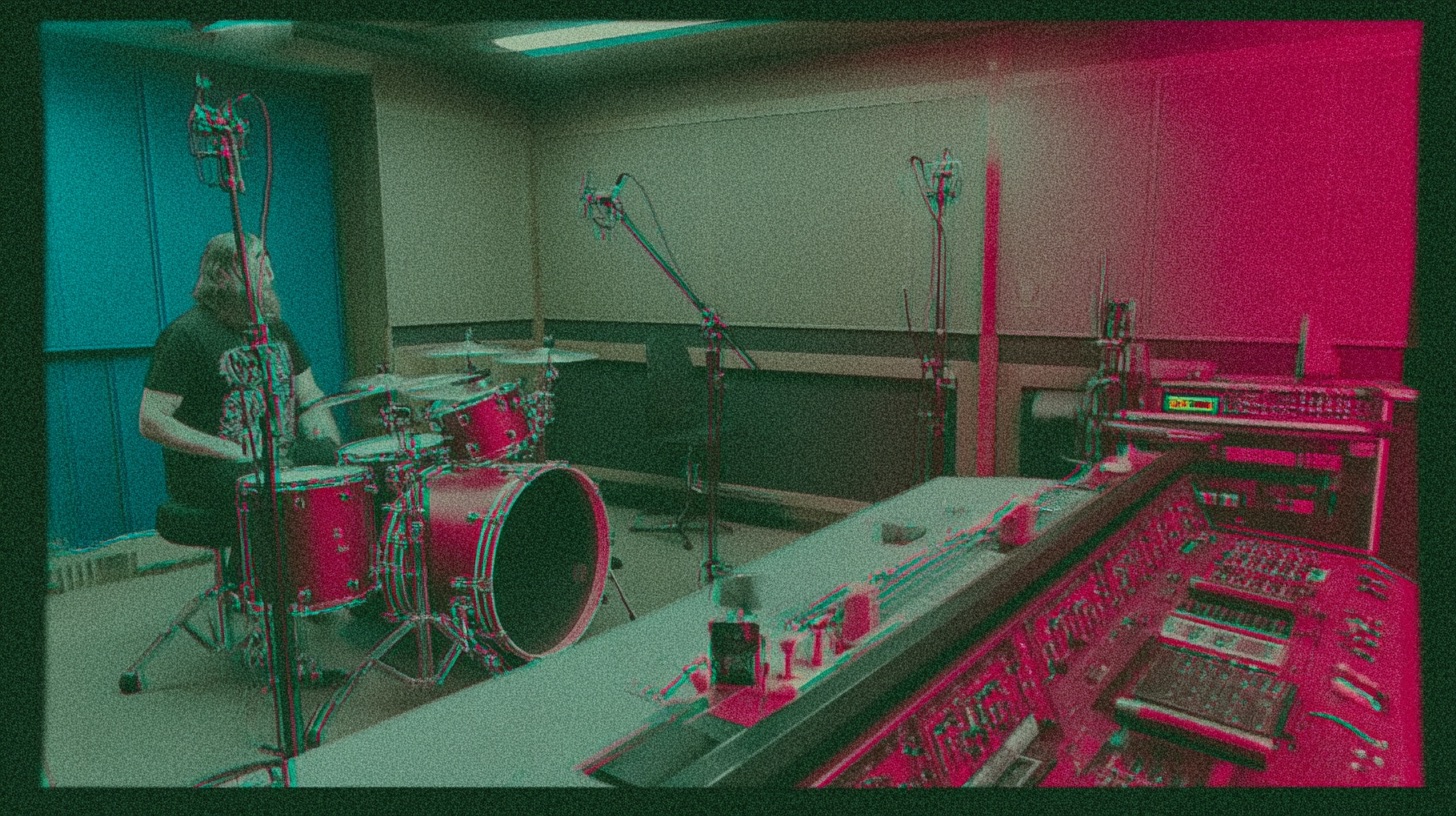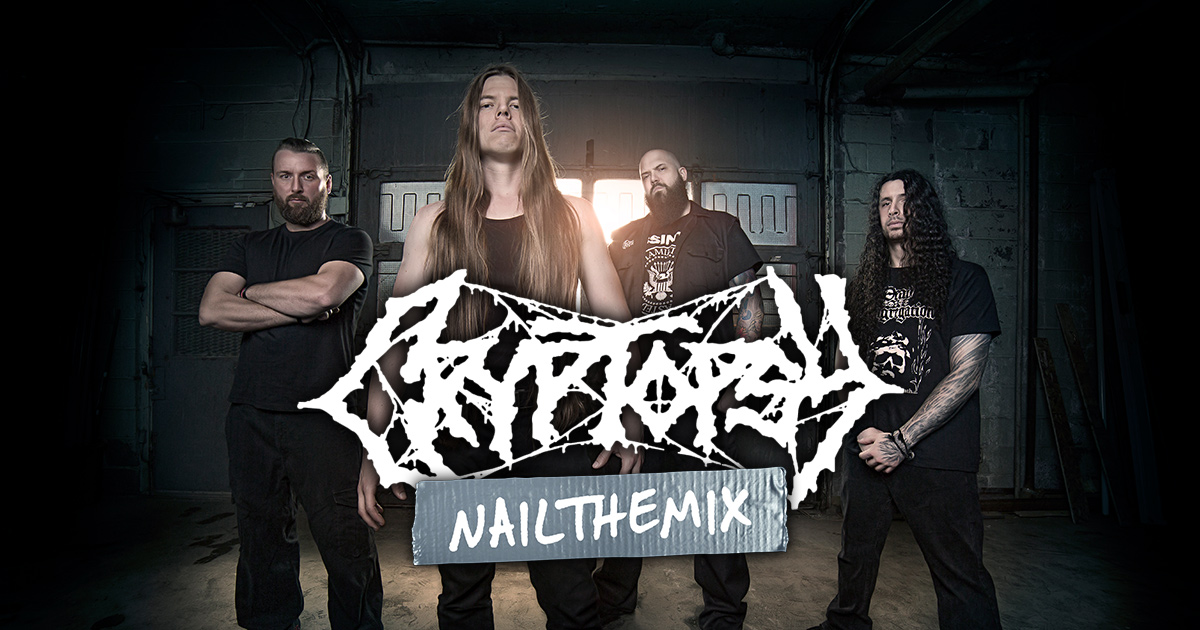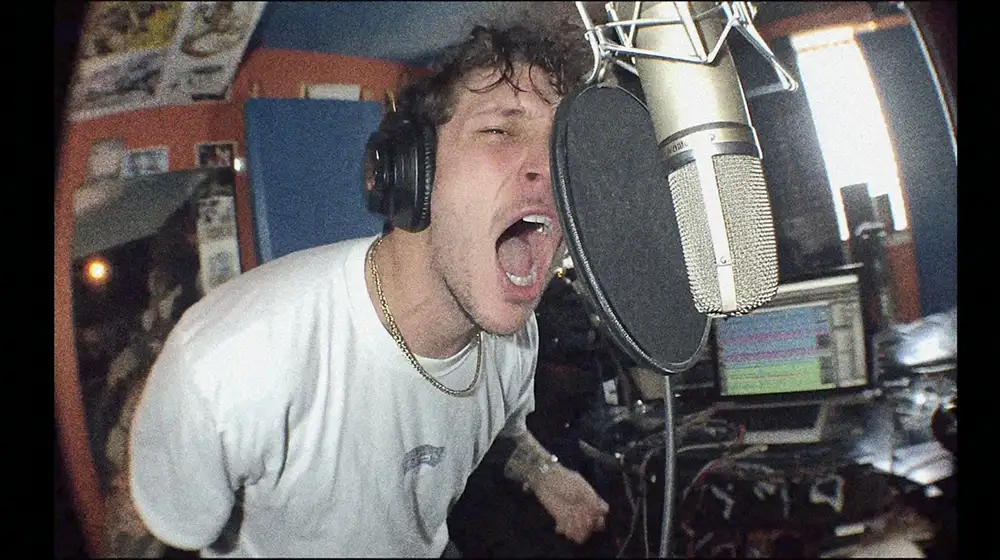
Mixing Jason Richardson’s ‘Fragments’: Raw Tracks & Taylor Larson’s Tricks
Nail The Mix Staff
Let’s be real, Jason Richardson’s “Fragments” is a technical and compositional beast. Featuring an all-star lineup with Luke Holland on drums and guest spots from Periphery’s Spencer Sotelo and Mark Holcomb, it’s a masterclass in modern progressive metal. The track, produced and mixed by the legendary Taylor Larson, is a dense tapestry of insane musicianship.
Ever wonder what it takes to mix a track with this much going on? We’re diving deep into the raw multi-tracks from the official session to uncover the production secrets that hold it all together. From sample-free drums to phase-aligned guitars and sprawling synths, let’s break down how a pro-level mix like this gets built from the ground up.
Building a Modern Metal Drum Sound… Without Samples
In a world of sample-replaced everything, Taylor Larson is known for getting massively powerful drum sounds from real performances. This track is a prime example. The foundation is a stellar performance from Luke Holland, captured with precision to make the mix process as smooth as possible.
The Core Kit: Consistency is King
The first thing you notice listening to the raw drum tracks is the incredible consistency of the playing. The kick in and kick out mics capture a performance that’s so even and controlled, you don’t need to immediately reach for samples to fix inconsistencies. This is the goal: start with a phenomenal source recording. Luke Holland’s ghost-note-filled performance is packed with detail, and because it was recorded so well, you can actually hear all of it. A great performance is the ultimate starting point for any powerful mix.
A Pro Trick for Taming Tom Bleed
Here’s a killer production insight straight from the session files. The raw tom tracks are recorded as short, punchy hits with very little sustain or cymbal bleed. How do you get that big, ringing tom sound? Taylor Larson left a simple note right on the tracks: “use reverb for sustain.”
This is a brilliant way to approach tom mixing. By capturing just the initial clean transient of the tom, you completely avoid the classic problem of cymbal bleed washing out your tom mics. You get a clean, isolated hit that’s incredibly easy to work with. From there, you can use a reverb plugin, a transient shaper, or even a carefully chosen sample triggered by the hit to create the exact length and character of the tail you want. It’s a perfect example of planning ahead in the recording stage to make the mix ten times easier.
Layering and Aligning Jason Richardson’s Complex Guitars
Jason Richardson’s guitar sound is all about clarity within chaos. To achieve this, Taylor Larson used a multi-layered approach that goes far beyond simply stacking a few rhythm tracks.
More Than Just Gain-Stacking
The session reveals multiple rhythm guitar tracks per side, including low-gain, mid-gain, and high-gain options. While blending these provides a tonally rich sound, the real magic is in how they interact.
Taylor Larson’s Phase Alignment Trick
Here’s the big secret to the guitar sound on “Fragments.” Instead of just lining up the different takes, Taylor Larson manually shifted the individual guitar tracks in time—by milliseconds—to create the perfect phase relationship between them.
When different audio signals are summed together, their phase interaction can either build them up (constructive interference) or thin them out (destructive interference). By meticulously nudging the layered guitar tracks, he was able to dial in the phase to where the tracks reinforced each other perfectly, creating a single, cohesive wall of sound that feels massive yet articulated. While he used his hardware for this, you can replicate the concept in any DAW by zooming in and manually moving the audio clips on your grid. It’s an advanced technique that separates good guitar tones from great ones.
Don’t Forget the Lo-Fi
A Jason Richardson track wouldn’t be complete without his signature lo-fi guitar textures. The session provides these parts as clean DI signals, giving you a blank canvas. This is your chance to get creative. You can run the DI through your favorite amp sim, then carve it up with surgical EQ strategies, and apply bit-crushers, filters, and saturation plugins to craft your own unique lo-fi effect that fits the track.
Taming the Programmatic Beast: Orchestration and Synths
Beyond the core band performance, “Fragments” is loaded with a massive amount of programming. We’re talking Prophet synths, full orchestration, futzed-out drum machines, glockenspiels, and atmospheric pads. Seeing dozens of synth tracks can feel overwhelming.
The first step isn’t to start turning knobs—it’s to get organized. Before you even touch a fader, take the time to clean up your session.
Group elements that play together near each other in your DAW. For instance, find all the synth layers that create a pad in the chorus and put them in a folder or on adjacent tracks. Color-code them. Do the same for the orchestral strings, the percussive synth hits, and so on. This simple organizational step transforms an intimidating track count into manageable sections, making it much easier to build your static mix and see how all the pieces are meant to fit together.
A Masterclass in Modern Metal Production
From the raw power of Luke Holland’s drumming and the intricate guitar layers to the stunning vocal performance by Periphery’s Spencer Sotelo and a blistering guest solo from Mark Holcomb, the “Fragments” session has it all. It’s a complete package that showcases every element of modern metal production at the highest level.
Jason Richardson on Nail The Mix
Taylor Larson mixes "Upside Down"
Get the Session
Reading about these techniques is a great start. But what if you could watch Taylor Larson himself apply these very concepts, right inside the Pro Tools session? That’s what Nail The Mix is all about. With a membership, you can access the full multi-tracks for “Fragments” and watch Taylor’s 8-hour livestream where he builds the mix from scratch, explaining every plugin, EQ move, and creative decision.
Stop just reading about pro techniques and start seeing exactly how they’re applied. Get the Jason Richardson “Fragments” session and see for yourself how a world-class producer sculpts a complex track into a finished master. Dive into this session and dozens more to move your mixes beyond presets and learn the real-world skills that make a difference.
Get a new set of multi-tracks every month from a world-class artist, a livestream with the producer who mixed it, 100+ tutorials, our exclusive plugins and more
Get Started for $1





